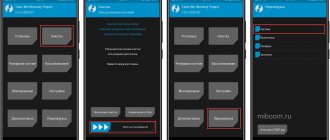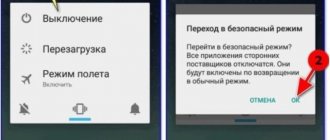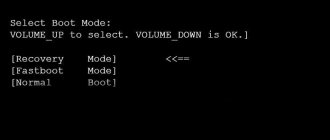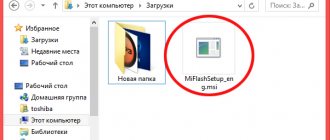MIUI 12 was introduced on April 27, 2021. The new firmware version has received significant changes in terms of animation, security and system options. The first presentation was traditionally for the Chinese region, after which a global announcement took place on May 19. In this article we will tell you how to update Xiaomi to MIUI 12 over the air (that is, the official method), through TWRP Recovery (localized firmware) and Fastboot (Developer and Stable versions). We’ll also find out which Xiaomi smartphones will receive the update and when.
What's new compared to MIUI 11
There are no significant changes in functionality in Miyuai 12. Almost all innovations relate to graphics, animation, applications and privacy of personal data. Let's take a closer look:
- Smooth animation with beautiful effects . It appears when switching between vertical and horizontal mode, as well as when opening programs and tabs.
- Changed design. All icons, settings menu and notification shade have been redrawn.
- Dynamic font . Letters can be scaled by adjusting their size and thickness. This should work not only with hieroglyphs, but also with Latin and Cyrillic alphabet.
- Dark Mode 2.0 . Dark mode is now supported in all system and third-party applications. After its activation, the image gradually darkens, rather than just turning on a black background.
- Super Wallpaper . The firmware introduced animated space wallpapers that move from the lock screen to the desktop. You can also customize an animated weather forecast: all natural changes will be displayed on the screen in the form of screensavers.
- Changed applications "Notes", "Tasks", "Calculator" And "Camera". The programs have received many improvements both in design and functionality.
- New themes in Always on Display . Users are offered a huge selection of dials, pictures and designs for the AOD.
- Convenient organization of important phone data . Information such as storage capacity, free/used memory space, smartphone characteristics is displayed in the form of graphs.
We talked more about the latest features in the news about the presentation of MIUI 12.
Firmware update over the air
If you just need to update the version of your operating system, then you can do this through OTA updates, which are regularly released by the developer several years in a row after the release of a certain model of a mobile gadget.
See also: How to make the default application on Android?
The main feature of OTA is that all your data will remain safe and sound, and the system will only load those modules that have been updated. And at the same time, there is no need to do any resets, download third-party firmware and connect the phone to the PC.
You do not need any skills in working with a mobile gadget to update the firmware version of your Xiaomi.
Go to the “Settings” of the device and click on the “About phone” tab; Find the “System Updates” item and go to the “Check Now” item; Your device must be connected to a wireless network - 3G, Wi-Fi, so that the system module can request updates; Once the reconciliation process is completed, an update notification will appear on the screen. Click “Update” and wait until the procedure is completed; At the end of the update, the device will reboot itself and you can enjoy working in the new operating system.
Important! To update, you will need a wireless Wi-Fi connection, since the firmware usually weighs about 1 GB. For a correct update, the battery charge must be at least 30-60%.
Release date for the global version of MIUI 12
MIUI 12 Global Stable was presented on May 19 . At the presentation, the developers provided a complete list of devices that will be updated. The update schedule to international MIUI 12 will be divided into 2 waves . In the first phase, the firmware will be released for new flagships, in the second – for phones released during the year, in the third – for older and budget models.
Flashing via Recovery
If the update fails using the previous methods, the user will have to use third-party programs. One of these could be the Official TWRP App, but you must first download the firmware file to your smartphone. It is recommended to perform further actions in accordance with the algorithm:
- Open root rights for Xiaomi or Redmi;
- Go to the Official TWRP App and install the firmware through it;
- Turn off your smartphone, then hold down the volume rocker and power button;
- In the menu that opens, reset the data by creating a backup in advance;
- Click “Reboot Recovery”;
- Click “Install” and select the update file;
- After installing the firmware, reboot the OS using the “Reboot System” command.
Which Xiaomi smartphones will receive MIUI 12 (officially)
After the presentation on May 19, the full list of Xiaomi phones that will be updated to MIUI 12 Global Stable is already known.
Redmi line
- Redmi K30 Pro, Redmi K30 Pro Zoom Edition, Redmi K30, Redmi K30 5G;
- Redmi K20 Pro, Redmi K20 Pro Premium Edition, Redmi K20;
- Redmi Note 9 Pro, Redmi Note 9 Pro Max, Redmi Note 9;
- Redmi Note 8 Pro, Redmi Note 8, Redmi 8, Redmi 8A;
- Redmi Note 7 Pro, Redmi Note 7, Redmi 7, Redmi 7A;
- Redmi Note 6 Pro, Redmi 6, Redmi 6A;
- Redmi Note 5;
- Redmi S2.
Mi line
- Mi 10 Pro, Mi 10, Mi 10 Youth Edition;
- Mi 9T, Mi 9T Pro, Mi 9 Pro, Mi 9 Pro 5G, Mi 9, Mi 9 Explorer Edition, Mi 9 SE, Mi 9 Lite;
- Mi 8, Mi 8 Transparent Edition, Mi 8 Screen Fingerprint Edition, Mi 8 Youth Edition, Mi 8 SE;
- Mi Note 3, Mi Note 10, Mi Note 10 Pro;
- Mi Max 3;
- Mi Mix 2, Mi Mix 2S, Mi Mix 3;
- Mi 6X.
Sub-brands
- Xiaomi CC9 Custom Edition, CC9 Pro, CC9e;
- Pocophone F1, Pocophone X2, Poco F2 Pro.
Flashing devices that do not support the new Android
Not all Xiaomi smartphones have officially received support for Android 8 and 9, not to mention version 10. However, it is still possible to install firmware on an outdated device, although there are many risks associated with this. For example, no one guarantees that after updating the gadget will work without errors. But if this point does not put you off, then you can use custom (unofficial) firmware.
Links to download such updates are posted on specialized forums like 4pda. Installation occurs in the same way as with the official firmware.
How to update Xiaomi to MIUI 12
Once you have found out who will receive the new firmware, you can proceed directly to the update. There are three methods to update your phone to the latest version - over the air, using custom recovery and MiFlash.
Over-the-air (OTA) update
The screenshots show the update from MIUI 11 to MIUI 12 over the air.
Firmware localized from MiRum. This is the simplest option , which is suitable for beginners and inexperienced users. When the update arrives, you will immediately receive a notification in which you need to click “Download firmware” , and then “Update now” .
But you can also check the availability of the new build yourself. To do this, go to “Settings” and open the “About phone” . Click "System Update" . A new page will open in which we click “Check for updates” . If a new version is available, the system will offer to download it.
The installation will happen automatically: the user will only need to select the update time - right now or at night. No additional steps are required.
Despite the simplicity of the method, it has two significant disadvantages:
- The update comes only to global firmware . If you have a custom or re-flashed Chinese version, the assembly will not arrive.
- The release of MIUI 12 Global is significantly delayed compared to the China ROM, so you will have to wait quite a long time for the over-the-air update. It’s much faster to install a localized shell yourself, based on a Chinese developer or stable build.
Via TWRP (localized firmware)
While the global stable firmware is not released, advanced users can install localized MIUI 12 via TWRP Recovery. The most popular builds are Xiaomi . EU and Mi - Room .
If you decide to install MIUI 12 Custom, check out our articles on localized versions and flashing using TWRP Recovery. A video about installing Xiaomi.EU will also help. Following the links you will find all the necessary complete information, and here we will duplicate only the most important information.
- Unlock the bootloader and install custom recovery.
- Load ADB drivers so that the computer recognizes the connected phone (in Windows 10, drivers are usually installed automatically).
- Download the Xiaomi.EU or Mi-Room firmware that matches your phone model. Please note that early builds may not have Russian language.
- Download the Magisk program. It is needed so that the custom recovery does not fly off and overlap with the stock one. You can download it from here.
- We put the smartphone into recovery mode by holding down the power and volume up buttons .
- We reset user data through the “ Wipe ” . Reboot the device using the “Reboot to recovery” .
- We connect the smartphone to the computer via a USB cable, and move to the phone’s memory .
- Disconnect the mobile device from the PC.
- On the phone, go to the “ Install ” and select the firmware file. Swipe right to confirm. We are waiting for the installation to complete.
- We return to the previous menu and install Magisk in the same way.
- Reboot your smartphone and proceed to the initial setup. This completes the firmware installation. The first turn on of the smartphone after the firmware can last up to 10 minutes, this is normal.
When installing the MiRoom firmware, Magisk will be built into the assembly, so there is no need to complete steps 4 and 10.
Via Fastboot (MiFlash)
This method is suitable for installing MIUI 12 Global, RU or China Developers. We have a detailed article that will help you flash your mobile device using Fastboot without any problems. In short, you need:
- Activate the bootloader and install on the computer the drivers necessary to recognize the connected smartphone.
- Install the MiFlash or MiFlash Pro program.
- Download the firmware file from a trusted source (only Chinese beta installation is available at the moment).
- Put your phone into Fastboot mode: to do this, turn it off, and after a minute hold down the power button and volume down rocker .
- Connect the device to the computer via the factory USB cable.
- Unpack the archive with the firmware onto the system disk , into a folder with a short name in Latin.
- Launch MiFlash.
- Using the “ Select ” , specify the path to the firmware file.
- Refresh the list of devices by clicking “ Refresh ” . If the smartphone has successfully connected, its code .
- At the bottom, set the cleaning parameters: “Clean all” , “Save user data” or “Clean all and lock” . The preferred option in most cases is “ Clean all ” .
- Click “ Flash ” and wait for the installation to complete.
Selecting “Clean all and lock” will lock the bootloader.
Standard system update
If you have a device that was released for the international market, then the update process will be simple.
Download the firmware for your mobile gadget from the official website of the version you need; Next, copy this file in zip format to the root of your device, making sure to place it in the downloaded_rom directory; Now in the settings of your device, find the “Update” tab and run the installer; In the window that opens, you need to click on the tab with 3 dots, and there click on the item “Select firmware file”; Specify the path to the archive that you just uploaded to the system, then confirm your actions; As soon as the process is completed, the system will reboot itself, and you will see the updated firmware version on the screen.
Before installation, the operating system always checks your version and the correctness of its files, so you can be sure of the stable operation of your device.
See also: Xiaomi Mi Max 4 features Snapdragon 730 chip and 5800 mAh battery











